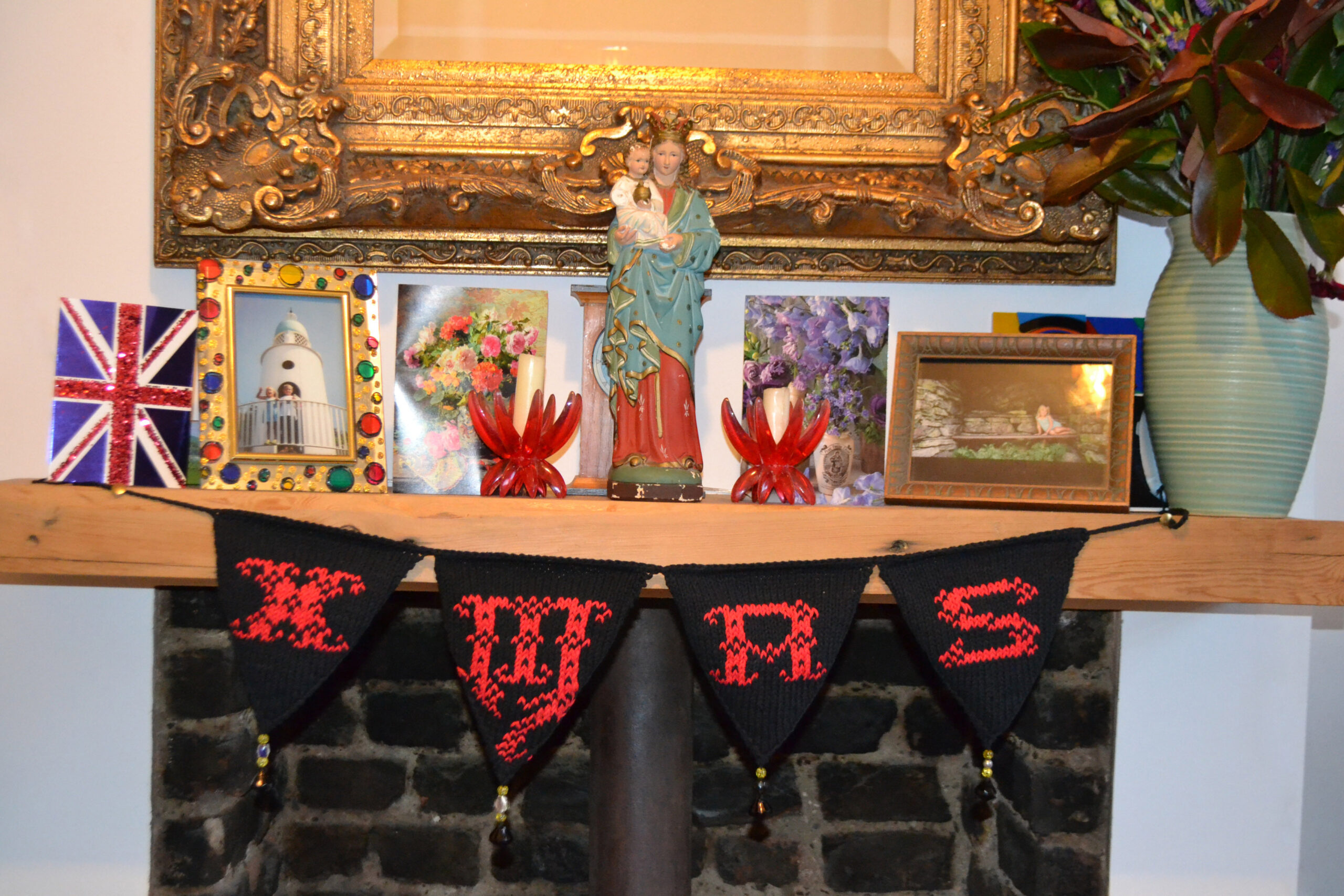Living through a global pandemic has made many of us appreciate the small things in life, so we’re fully embracing nostalgic trends, like hand knitting, baking and other crafts.
So many have taken up crafts over lockdown, especially young people wanting to recreate the JW Anderson cardigan worn by Harry Styles, which was offered as a free download knitting pattern by Creative Director Jonathan Anderson. It’s great for young people to experience the “mindfulness” that hand knitting offers as a response to relentless social media and to experience the feeling of achievement and wellbeing having crafted something unique.
It’s not surprising therefore that “Hand-made” is a major trend for Christmas 2020. I love to receive hand-made gifts and cards – the fact that someone has taken time and energy to create something is very special and personal.
I’ve now re-released my Christmas Bunting pattern, which is available to download from Love Crafts and Ravelry. The bunting has a Gothic feel when knitted in Black and Red, but it would look equally great knitted in neutrals or any colour combination to match your Christmas décor. The pattern recommends DK cotton, but you can use this project as an opportunity to use up your much-loved yarn “stash” and create something truly unique. Equally you can use up spare beads or jewellery pieces to decorate the ends of each flag. Hopefully your Christmas Bunting will become part of your festive décor for many years.
I’m pleased to announce that the bunting will be featured in The Guardian WEEKEND magazine in an article about Hand Made Christmas ideas – December 5th, with a short interview with yours truly!
Keeping the Skills Alive!
Love Crafts – https://www.lovecrafts.com/en-gb/p/christmas-bunting-knitting-pattern-by-ruth-herring
Ravelry – https://www.ravelry.com/patterns/library/christmas-bunting-9
